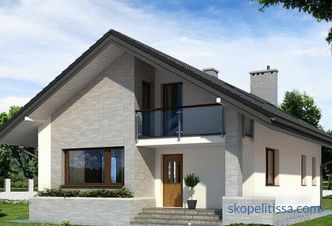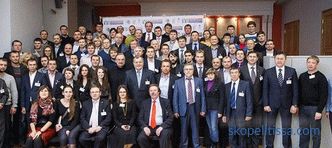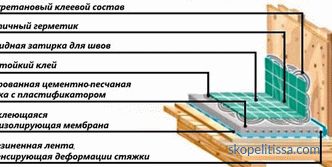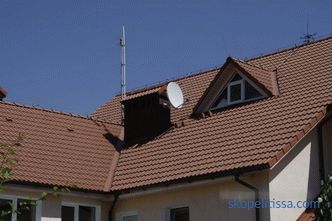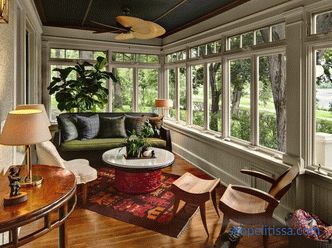The question of whether a stove is needed for a garage rises immediately after warm days are replaced by a cold season. And although antifreeze is poured into the car's cooling system, the cold adversely affects the battery, which in the winter simply does not want to start the car. At the same time, the motor warms up for a long time, the oil thickens, and the owner of the garage has an unpleasant feeling in it. Therefore, in this article we will deal with ovens that can be used in garages, tell about their varieties, pros and cons, and also give examples of designs.
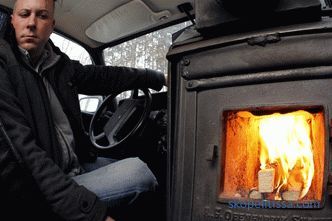
To disassemble in garage furnaces, it is necessary to understand that ordinary stoves that heat houses are here will not work. A unit is needed that would evenly fill the space with heat, penetrating even into the viewing pit. Today, manufacturers offer a fairly wide range of garage furnaces, but do they all cope with their responsibilities. After all, the garage has a completely different ratio of square-cube. Briefly about it.
What is the principle of cooling the garage
What is the ratio: square-cube. About this parameter heat engineers know firsthand. The thing is that the smaller the structure, the greater the ratio of the area of its limiting structures to the internal volume of the room. So, for its heating will require more thermal energy.
So that you understand what we are talking about, let's compare two objects: a house 10x12 m in height 5 m, a garage 7x4 m in height 2.25 m. The volume of the house is 10x12x5 = 600 m³. The area of structural elements, and these are four walls, floor and ceiling, through which heat loss occurs is 460 m² (it is easy to calculate, everything is at the level of the school curriculum). Now the volume of the garage, which is equal to 63 m³ and the area of its restrictive structures - 105.5 m².
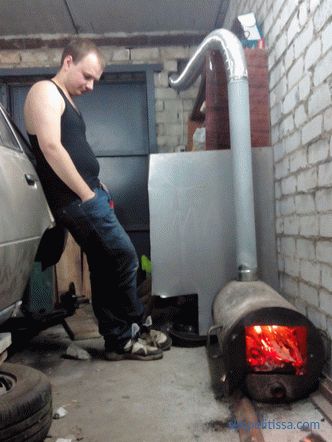
Now it is necessary to compare the ratios of the total area to the volume of each object. It turns out at home: 460/600 = 0.77, at the garage: 105.5 / 63 = 1.67. That is, a comparison shows that the garage has almost twice as much heat loss as the house. It turns out that the stove, which will have to be used in the garage, should be more powerful.
Of course, you can take into account that the garage temperature may be lower than in the house. For example, the optimum it will be no more than + 16C. But even in this case, the heating element will still be more powerful than that used in the house.
Rules for heating a garage
So, having dealt with heat losses, we turn to the question of how to heat a garage. Firstly, it should be noted that a more powerful furnace is a big fuel consumption. So, it is necessary to purchase a heating unit of economical action, which has a high efficiency.
Secondly, the stove must heat the garage room quickly. And if it concerns a private garage, then it should cool down quickly. This is due to fire safety requirements. Usually this category includes wood burning stoves. They quickly heat themselves and heat the room (15-20 minutes), and also cool down quickly. But due to low fire safety, such units are rarely used.
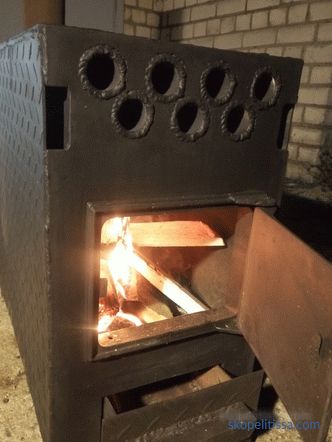
But on its way it is necessary to meet a layer of cold air, which is denser than warm. This means that the heat will begin to spread along the bottom, mainly near the floor, gradually heating the space as a whole. At such a heating rate, the warm air never gets to the ceiling, it will spread in breadth. At the same time, the upper part of the garage and its walls will remain cold, because the convection of warm air will spread like a mushroom, that is, to the ceiling, without touching it, and then along the walls to the floor. At the same time warm air will not touch the wall surfaces either. And there is no contact with cold surfaces, there is no heat loss through them.
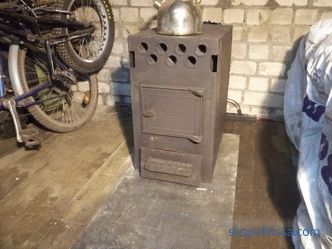
Our site contains 27 of the most successful projects of garages from 106700 rubles. And also you can familiarize yourself with the most popular projects of other buildings - bathhouses, gazebos - from construction companies represented at the exhibition "Low-Rise Country".
If you use an ordinary stove for a garage, which is used in homes, then all the physical laws described above will not work. This mainly concerns garages in which the thermal insulation qualities of the materials used were not taken into account. But note that the heat radiation of a non-insulated garage is instantly absorbed. So this option of heating, and any other, can be immediately discarded, as ineffective.
Therefore, before solving the issue of a garage stove, you need to think over and carry out heat insulation measures. It is important to choose the right insulation and finish. Optimally, if space allows, conduct insulation outside. The easiest option is brick veneer.
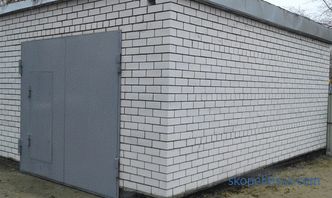
Our site contains the most popular house manufacturers that are presented at the exhibition and offer services: installation of fireplaces and furnaces, metal constructions (sheds, greenhouses, etc.), extensions to existing houses, design and construction of small architectural forms: gazebos, grill houses, sheds, etc. ".
Brick kilns
It should be noted that brick-built kilns are not the best option for heating a garage room. There are several reasons for this:
-
Thermal recoil of brick masonry - 0.5 kW per 1 m² of its same plane. That is, a standard size heater will need a stove that will occupy half of its area .
-
For a brick construction , in which clay is used as a masonry mortar, a special microclimate is required with slight changes in humidity and temperature. About the garage this can not be said. Ved clay - material hygroscopic . He quickly absorbs into himself moisture , cracking and exfoliating.
-
Convection for furnaces of this type is the minimum . That is, it is not necessary to speak about rapid heating of the garage . Usually it takes up to 2 hours to warm up, depending on the volume of the garage room.
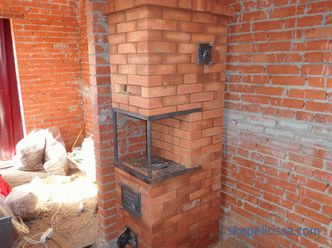
But it should be noted that brick stoves are installed in garages. Especially if the garage is used as a workshop.
The video shows how to build a brick stove inside the garage:
It could be interesting! In the article on the following link, read about the materials and rules for warming the roof of garages.
Choosing a garage stove
So, wood stoves are not suitable. Today, manufacturers offer liquid fuel units operating on diesel and various oils (their waste). It should be noted that this is one of the best solutions for how to heat a garage in winter. What manufacturers offer.
-
Long burning furnaces . The essence of the device and the principle of operation of the device lies in the fact that the burned fuel does not only burn one hundred percent, but also pyrolysis gases are burning, which are formed due to the combustion of the fuel itself. At the same time, burning heats the diesel or technical oil , which reduces energy losses to bring them to the desired state. That is, it turns out that the long-burning furnace is divided into two parts : in one fuel burns, in the second (upper) pyrolysis gases . From here and double power . But such stoves are very economical : 1.5-2.0 liters of mining to produce 8-10 kW of thermal energy.
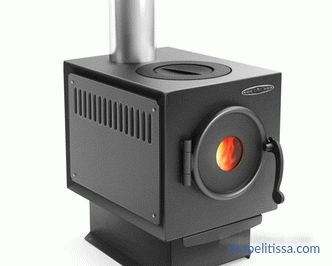
-
Thermal gun , working on diesel . Such heaters today in a wide range. But this unit, even the most low-powered, is too high fuel consumption . It's all about the construction of nozzle , through which diesel is supplied. Cannot make a strong limitation on this element. Because a small hole in the nozzle will not give a steady flow of fuel, due to which the unit itself will not work efficiently. Heat guns better to heat large garage or warehouses.
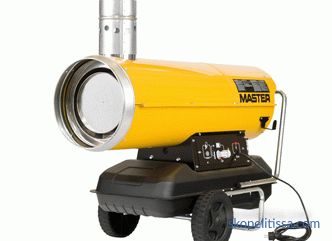
-
Infrared stoves on diesel fuel . Experts believe that this is the best option for heating garages of small size . The design of the stove is the so-called drip-evaporative burner , working on any liquid fuel and oils. Plus, a fan, which replenishes the exhaust gases coming from the combustion zone of the fuel with oxygen, is added to the design. It turns out combustible mixture , which also burns, emitting a large amount of heat .This model is somewhat similar to the first (long-burning furnace), but its efficiency is 100% .
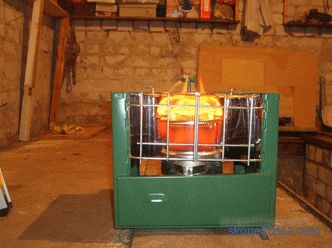
This could be Interesting! In the article on the following link, read about the ways of insulating metal garages + heat-insulating materials used for this.
At once it is necessary to make a reservation that all the above-described structures emit carbon monoxide when working. The first and last fewer than the second, but the selection, even miserable, are present. Therefore, installing the stove from this list in your own garage, you must consider the ventilation system. As practice shows, one exhaust pipe in the roof of a garage with a diameter of 100 mm will be enough.
There is another option for which ventilation is not needed. This is the so-called gas catalytic infrared oven, which completely burns fuel without the release of carbon monoxide. However, it should be noted that this unit has a very large heating of the radiating surface. The temperature exceeds the ignition temperature of the fuel used in automobiles. For diesel cars it is not so scary, because for ignition of diesel fuel it is required to bring it to high pressure. Gasoline also ignites at atmospheric pressure. So, if the garage is designed for cars with a gasoline engine, then you should not heat it with such stoves.
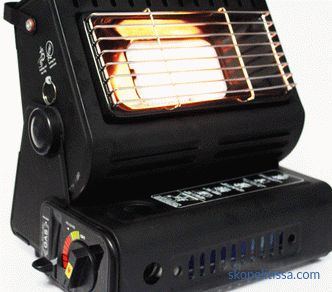
It could be interesting! In the article on the following link read about the main fears when choosing a country house and a plot.
The next version of the garage furnace is air heater structures. A bright representative of this type of aggregates is the buleryan. This unique design throws warm air into the space of the garage room, plus the thermal energy that the device itself radiates. The efficiency of the buleryan is not the highest - 75%, but manufacturers offer a fairly wide model line in terms of its power: from 2 to 200 kW. For the garage fit the smallest.
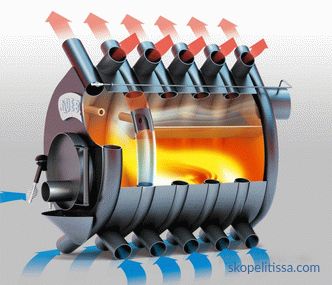
Here are the advantages of the Buleryan stove:
-
Heating of the room begins immediately , the normal temperature inside the garage becomes already after 5 minutes.
-
One fuel load is enough for 6-8 hours .
-
This heating unit "consumes" even raw wood .
The only drawback: Buleryan - wood stove with all the ensuing consequences. But representatives of the fire department treat her with respect.
The video provides a summary of the Buleryan model wood-burning stoves:
And last. On the market a huge number of proposals of various models of stoves for the garage, made in small shops. Their price is lower and they work efficiently. But no one gives a guarantee of quality. But the stove, installed inside the garage building, must meet all fire safety requirements. That is why many owners of private garages who install improvised heaters inside are fined for breaking fire safety equipment. And the fines are considerable.
But even when operating factory units, which have both quality certificates and fire certificates, it is necessary to have a fire extinguisher on hand in the garage, and better not one. The devices are usually hung near the stove, and one near the entrance.

This may be interesting! In the article on the following link read about two mini-cottages, as ancillary extensions to the house on the mountainside in Mill Valley, California.
Conclusion on the topic
So, the article highlighted the question of which stove to choose for the garage. Of course, for such a structure the best option is an electric heater such as an oil radiator. It is safe in operation, mobile, inexpensive. But consumes a lot of electricity, for which you have to pay. Plus, the heating rate is low. And for the garage room is an important factor.
